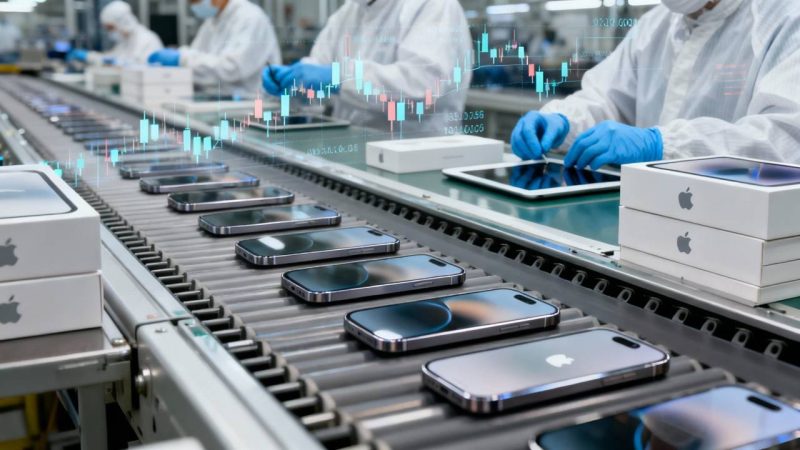
Apple is reportedly reducing production of its newest phone, the iPhone Air, after a mixed response in Western markets, where demand has been weaker than expected.
Japanese investment bank Mizuho Securities says the slowdown doesn’t mean Apple’s “retreating from the new model” but rather signals that the company is realigning its manufacturing plans with current market conditions.
According to the report, Apple has reduced its production target for this quarter by approximately one million iPhone Air units compared to earlier estimates. However, overall production of the iPhone 17 series — which includes the Air and other models — has risen slightly this quarter when compared to the previous one.
This suggests a strategic readjustment, rather than an industrial setback likely to rattle Dow Jones futures, where Apple remains one of the most closely watched components. On most stock screeners, the company’s fundamentals continue to appear solid, underscoring investor confidence in its long-term performance despite short-term shifts in product output.
Fortunes Vary by Region
Early sales data and retail reports show that the iPhone Air’s performance varies widely by region. In China, the device has been well received, with preorders selling out within minutes.
The iPhone Air’s lightness and minimalist design seem to particularly appeal to Chinese consumers. By contrast, the sales in Europe and North America have been far more subdued.
Both MacRumors and BGR have cited sources suggesting that the iPhone Air is not selling as well as Apple had hoped, prompting a reduction in the number of units slated for production.
Adding to the complications, Business Insider has reported that Apple encountered regulatory hurdles in China due to the phone’s new eSIM-only design — the Air has no physical SIM card slot, requiring additional government approval.
Trade-Offs in the iPhone Air
The Apple iPhone Air is Apple’s slimmest smartphone to date, a feat of engineering that underscores the company’s design prowess. However, reviewers have noted some trade-offs: battery life has suffered, the single camera feels like a step back in an era when most smartphones feature at least two lenses for varied shooting options.
Sound quality has also drawn criticism. The device is limited to a mono speaker — an odd choice made more conspicuous by comparison tests showing the iPhone 17 and 17 Pro offer far superior stereo sound.
This reflects a familiar industrial dilemma: the tension between cutting-edge design and day-to-day practicality. While the iPhone Air’s aesthetics are undeniably striking, consumers outside Asia seem hesitant to prioritize thinness over battery endurance and camera versatility.
Apple is certainly not in panic mode, but it is fine-tuning its approach behind the scenes. Even a trillion-dollar tech giant must occasionally rebalance the equation between innovation, cost management, and customer expectations.
